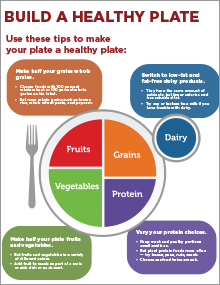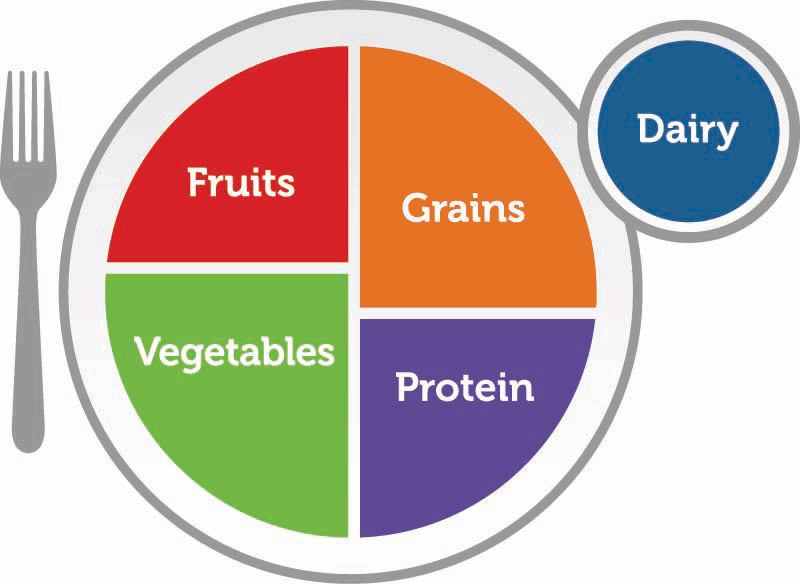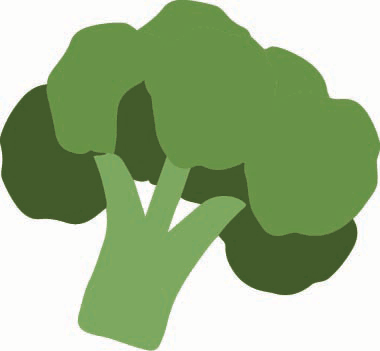Revised
Editor’s note
You can read this publication on this page or download the PDF.
See the companion publication N1044, Build a Healthy Plate Poster.

This poster highlights key messages of the dietary guidelines, including eating more fruits, vegetables, whole grains, and lower-fat dairy products; eating less sugar, fat, salt/sodium; varying protein choices; and balancing calories for weight maintenance. Using food labels to make better food choices and being physically active are also addressed.
The printed version is a two-page 8.5-by-11 inch handout.
See handout content below.
Build a Healthy Plate
Use these tips to make your plate a healthy plate.

Make half your grains whole grains
- Choose foods with 100 percent whole wheat or 100 percent whole grains on the label.
- Eat more whole grains such as brown rice, whole wheat pasta, and popcorn.
Switch to low-fat and fat-free dairy products
- They have the same amount of nutrients, but fewer calories and less saturated fat.
- Try soy or lactose free milk if you have trouble with dairy.

Make half your plate fruits and vegetables
- Eat fruits and vegetables in a variety of different colors.
- Add fruit to meals as part of a main or side dish or as dessert.
Vary your protein choices
- Keep meat and poultry portions small and lean.
- Eat plant protein foods more often — try beans, peas, nuts, seeds.
- Choose seafood twice a week.
Use food labels to help you make better choices
Most packaged foods have a Nutrition Facts label and an ingredient list.Use these to help you make smart food choices.
- Check serving sizes and how many servings you actually eat.
- Choose foods with fewer calories and less saturated fat, trans fat, sodium and sugar.
- Read the ingredient list to find whole-grain ingredients and added sugars.
Sip smarter
- Drink water instead of sugary drinks.
- Check the labels on your drinks for added sugar.
Eat more
- Fruits
- Vegetables
- Whole grains
- Low-fat and fat-free dairy products
Eat less
- Cut back on foods high in saturated fat, sodium and added sugar.
- Compare sodium in foods and choose foods with lower numbers.
- Limit extra gravies or sauces.
- Use oil instead of solid fat in cooking
- Choose water, unsweetened tea, or milk over sugary beverages.
- Use these foods as occasional treats, not everyday foods.
Eat the right amount of calories for you
- Balance your calories with physical activity.
- Enjoy your food, but be mindful of portion sizes.
- Eat slowly and take the time to enjoy your food.
- A smart trick to control portion sizes — use a smaller bowl or plate, and always portion out snacks rather than eating straight from the bag or box.
- Pay attention to hunger and fullness cues — stop eating when you are satisfied, not full.
- Eat at home more often. This makes it easier to eat healthier, and it also saves money!
- Check out the nutrition information for your meal when you do eat out so you can make an informed decision.